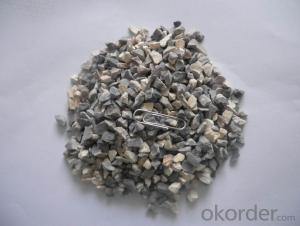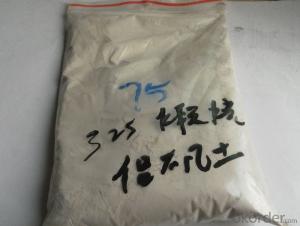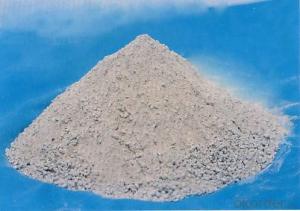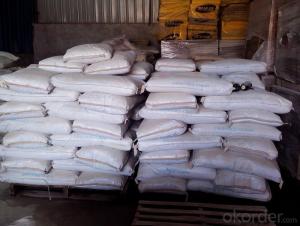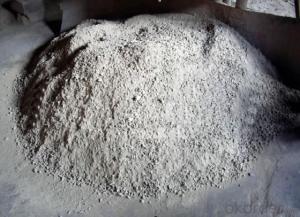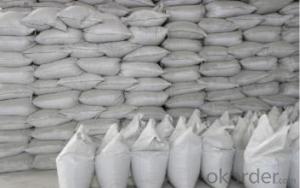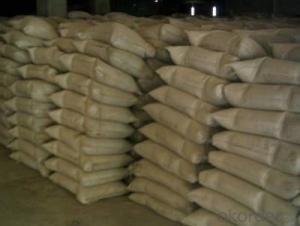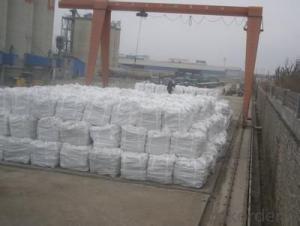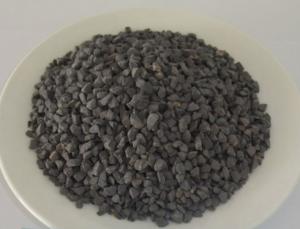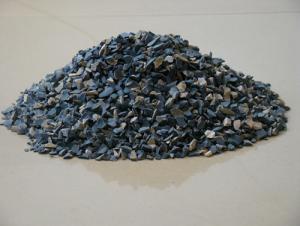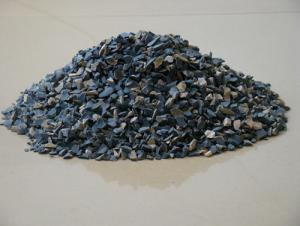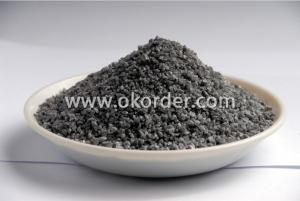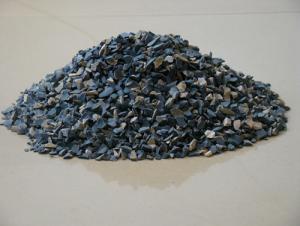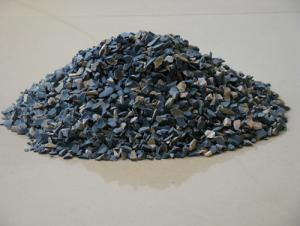Raw Materials for Refractory:High Alumina Cement Fire Clay Refractory Cement
- Loading Port:
- Tianjin
- Payment Terms:
- TT OR LC
- Min Order Qty:
- 0 m.t.
- Supply Capability:
- 60000 m.t./month
OKorder Service Pledge
OKorder Financial Service
You Might Also Like
High Temperature Castable Refractory Cement
Product Description
Refractoriness of not less than 1580 °C cement. According to the composition of different can be divided into low calcium aluminate refractory cement, calcium aluminate cement, calcium aluminate cement and dolomite refractory cement. It can be used for various refractory cement cement refractory aggregate (such as corundum, Calcined Bauxite,etc.) made of refractory mortar or concrete, used in cement rotary kiln and other industrial furnace lining.
Specifications
Refractory cement lining baking, must pay attention to the following matters:
1) at room temperature 350 degrees, most likely caused by local spalling, special attention should be paid to slow baked. As in the 350 degree heat preservation is still a lot of steam coming out, still should slow heating rate.
2) in poor ventilation, water is not easy to discharge conditions, to extend the preservation time.
3) when using heavy oil for baking, to prevent oil spray on the lining surface, to prevent local burst.
4) when using firewood baked, direct contact with the flame is often caused by local heating too fast, should be protected.
5) on refractory cement pouring, at least by 3D after baking.
6) for refractory cement lining cooling slowly, avoid the forced ventilation.
Products Photos
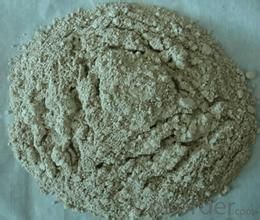
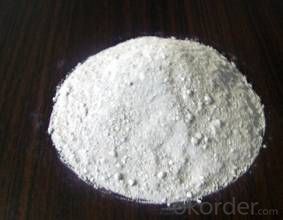
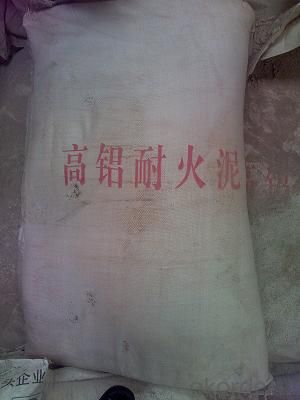
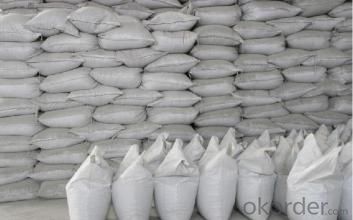
Aluminate Cement | Type | CA50-G5 | CA50-G7 (725#) | CA50-G9 (925#) | CA50-F9 (SECAR51) | ||
Items | Unit | Standard | Results | Test data | |||
Blaine | cm2/g | GB8074-87 | 3000 Min | 3000 Min | 4000 Min | 4500 Min | |
Initial time | hour:minute | GB/T17671-1989 | 0:30 Min | 0:30 Min | 1:30 Min | 4:20 | |
Final time | 6:00 Max | 6:00 Max | 6:00 Max | 4:50 | |||
Flexural | 1 day | Mpa | GB/T17671-1999 | 5.5 Min | 7.0 Min | 9.0 Min | 11.5 |
Strengh | 3 days | 6.5 MIN | 8.0 Min | 10.0 Min | 12.3 | ||
Compressure | 1 day | 40 Min | 50 Min | 70 Min | 79.5 | ||
Strengh | 3 days | 50 Min | 60 Min | 80 Min | 85 | ||
Chemical Composition | SiO2 | % | GB/T205-2000 | 8.0 Max | 7.0 Max | 5.5 Max | 4.75 |
Al2O3 | 51.0 Min | 52.0 Min | 54.0 Min | 52.08 | |||
Fe2O3 | 2.5 Max | 2.5 Max | 2.0 Max | 1.82 | |||
CaO | 33.0 Min | 33.0 Min | 33.5 Min | 36.46 | |||
MgO | 1.0 Max | 1.0 Max | 1.0 Max | 1.22 | |||
TiO2 | 3.0 Max | 3.0 Max | 3.0 Max | 2.67 | |||
Note | PACKING | ||||||
25 KG X 40 BAGS ON A WOODEN PALLET WITH FILM AND P/W COVER Qoality of Goods confirms to China standard GB201-2000 | |||||||
- Q: What are grade classifications of the external walls fireproofing material?
- There are many kind of external walls fireproofing material, according to the document No. 65, the grade of external wall fireproofing material can be divided into: Level A is inorganic insulation non-combustible materials, such as cement foam insulation board, vitrified?micro bead?thermal insulation?mortar, rock wool board, glass wool panels. Level B1 is nonflammable material, mostly are organic material which has added a relatively large amount of flame retardant, such as polystyrene board, extruded sheet, phenolic foam board and polyurethane board. Level B2 is flame-retardant materials, and also known as fire-retardant materials, mostly are organic insulation materials with appropriate amount of flame retardant.
- Q: What are the physical properties of refractory material?
- The mechanical properties of refractory material include compressive strength, volume density and sclerosing, slag resistance, elastic modulus, thermal shock resistance, oxidation resistance, bibulous rate, fluidity, resilience, bond strength and slump, electrical conductivity, specific heat, heat capacity, the impact strength, linear change, torsional strength, stomatal aperture distribution, resistance to acid, etc. The use performance of refractory material include refractoriness, thermal emissivity, condensation, porosity, coefficient of thermal expansion. Thermal properties of refractory material include thermal conductivity, temperature conductivity, plasticity, the hydration resistance, creep performance. The physical properties of the refractory materials include structure performance, mechanical properties, shear strength, load softening temperature, CO erosion resistance. The structure properties of the refractory materials include porosity, alkali resistance and sintering. The operating performance of refractory material include consistency, tensile strength, the use performance and operating performance, wear resistance, bending strength, thermal properties.
- Q: Is the ball mill used in production of refractories?
- Refractory is a kind of non-metallic material that is of resistance to thermal shock and chemical erosion, low thermal conductivity and low expansion coefficient. The refractoriness of the refractory is not less than 1580℃. The usage of the refractory is broad. Refractory materials include refractory bricks and powders. Abandoned refractory bricks can be recreated as new bricks after they are crushed by a crusher and grinded by a ball mill. The ball mill and crusher are needed to grind and crush the material in the production of the refractory. The ball mill produced by Zhengzhou Xinhai Machinery Manufacturing Co. has excellent performance and there are many successful cases in Inner Mongolia, Heilongjiang and Guangdong. At the request of the national environmental policy, the company adjusts the equipment details, allowing the equipment to ensure the volume of production while reduce energy consumption.
- Q: What is the fire endurance of fireproof glass cotton?
- of course,A level is better. A-class is non-combustible, class B is fire retardant, rock wool fire resistance is 800 ℃, glass wool fire resistance is 450 ℃ , class B has a relatively better thermal insulation effect, hope it can solve your doubts.
- Q: What kind of material is refractory bauxite?
- Bauxite in refractory industry usually refers to the calcined bauxite ore which contains Al2O3 no less than 48%, while the content of Fe2O3 is rather low. Clinker of bauxite with high alumina is calcined bauxite. Tghe clinker is grey, light yellow and dark gray.
- Q: what are the types of piping insulation material fire?rating?
- Pipe insulation material Fire rating: heat conductivity coefficient(at room temperature) 0.025 grade non-combustible Class A low temperature bending ≤ 5000 breaking elongation 5,000 specifications 5000 anti-bending?strength 5000 compressive?strength 5000 special brand of high use temperature -250 ~ 150 ℃ core material, phenolic foam, form, stratiform, shape,flake.
- Q: Fefractory of aluminium oxide.
- It can be refined into castable refractory and refractory bricks, according to temperature rating. There are shaped refractory material and shapeless refractory material, and ceramic fiber. So it must be specific. There is a large range of refractory, which basically contains the aluminium oxide.
- Q: Who can tell me the properties and classification of insulating refractories?
- Insulation materials can be classified according to service temperature, production process and application fields.
- Q: Does the aluminum silicate thermal insulation material fireproof?
- it can be fireproof and has a strong fireproof?performance.
- Q: What are the grades of refractory exterior wall thermal insulation materials?
- Classification of fire rating of extrior thermal insulation materials 1, According to national standard GB8624-97, the combustion performance of building materials are divided into the following grades A level: Incombustible building materials: Materials hardly burn. B1 class: Flame-retardant building materials: Flame-retardant material has good flame resistance. In case of fire in the air or at high temperature, it is difficult to catch fire and the fire will not spread quickly. And when the combustion source is removed, the burning will stop immediately. B2 Class: Combustible building materials: Combustible materials have a certain flame retardancy. In case of fire in the air or at high temperature, it will immediately burst into flames and it is easily to spread fire, such as wooden column, wooden roof truss, wooden beams and wooden stairs, etc. B3 level: Inflammable building materials: It has no flame retardant effect, and it is extremely inflammable, and the risk of fire is high. Classification of exterior wall thermal insulation materials according to fire rating: 1. Thermal insulation materials with A-level combustion performance Rock wool, glass wool, foam glass, foamed ceramic, foam cement, hole-closed perlite, etc. 2, Thermal insulation materials with B1-level combustion performance: Extruded polystyrene board (XPS) after special treatment / polyurethane (PU) after special treatment, phenolic aldehyde, gelatine powder polystyrene granule, and etc. 3. Thermal insulation materials with B2-level combustion performance: Molded polystyrene board (EPS), extruded polystyrene board (XPS), polyurethane (PU), polyethylene (PE), etc.
Send your message to us
Raw Materials for Refractory:High Alumina Cement Fire Clay Refractory Cement
- Loading Port:
- Tianjin
- Payment Terms:
- TT OR LC
- Min Order Qty:
- 0 m.t.
- Supply Capability:
- 60000 m.t./month
OKorder Service Pledge
OKorder Financial Service
Similar products
Hot products
Hot Searches
Related keywords










